On June 28 friends and supporters of Holy Ground, the retreat ministry here in western North Carolina which I have advised and supported for the past fifteen years, gathered to close out its organizational existence. Holy Ground has been a ministry of education, spiritual nurture, and supportive public space for women and men who, in the words of Holy Ground’s mission, are committed “to explore the Holy and to seek justice.” Here are my remarks from that occasion, which focused on the eco-feminist themes in Holy Ground’s work.
Today we seek to claim the spirit of Holy Ground even as we bring this present structure to a close. We want to grasp the images and stories, the words, themes and phrases that have filled this work over the past fifteen years, for they contain visions we can still live by and transmit to others. Among its many central themes, one has stood out especially for me – the theme of eco-feminism. This is one important lens through which to catch a vision of this work that has inspired us.
The modern feminist movement was quick to realize that the struggle for women’s full participation in the public sphere was inseparable from the struggle for the integrity and dignity of the whole natural world. The suffering of women – as mothers, mates, citizens, and workers – were shared with the sufferings of this earth. The rights and dignity of women were bound to the rights and dignity of the life of Mother Earth. The movement of women from exploitation to equal partnership with men also demands that we move from exploitation of the earth to a sustainable partnership in its life-giving powers. There is no liberation for humans without a liberation of the earth. This, it seems to me, is the core of “eco-feminism.”
The very name of the enterprise we celebrate today – Holy Ground – opens the door to this way of living in the world. The biblical image of Moses beholding the utter mystery of the Creator, the Great I Am, has shaped our spiritual history. Moses took off his shoes and let his bare feet feel the earth. He let the earth feel his toes. Earth took his toe prints, like the feet of Buddha, letting him know he was of the earth yet living in the depths of the divine Spirit. Moses was transformed by that event, along with his wife Zipporah, his people, and countless others. In our own time it means that there is no holiness without groundedness. The God who appears to Moses is the fire at the source of all things.
In this same passage, moreover, this Source of all things gives Moses a promise of liberation for an oppressed people. In the life of Holy Ground, this image, this starting point, has opened up a space for women to claim both their public and private lives by feeling the ground, by being awed by the fire at the heart of life’s mystery, by hearing the voice of the everlasting Other – the I Am and the You Are of life. Each one of us can tell a story about how this experience of Holy Ground has opened up a life of deeper centering and powerful relationships, of how this reconnection with our Source is a work of powerful liberation.
We have learned many things by letting our bare, unprotected feet touch holy ground. We have learned that we are dependent on earth like an infant on her mother, like a child on his parent. We freshly learn that we are Eve-Adam, life-earth. We learn that we are human, from the humus. From the Earth we learn that the core of wisdom is humility, acknowledging we are of this earth. It is our parent, our kin, our child to come. From humility comes patience, the patience we learn by trying to imagine Earth’s time, earth’s patience in lifting up these mountains time and time again, Earth’s patience to grow a giant tulip poplar or a sequoia. Earth’s time to bring new life out of asteroid impact, flood, and fire.
From Holy Ground we learn there is no care without caring for the earth. The Holiness of Groundedness calls us from a taming of the earth to a tending of it. It calls us from the wilderness of conflict into a garden of mutuality – a garden where we live by enough rather than by more, by sufficiency and not by greed.
From Holy Ground we learn there is no craft and art unless we work earth’s dirt, clay, wood, stones, and plants with our own hands. So often it is women’s hands whose touch of clay and fiber, fruit and flower, have crafted beauty out of earth. From their artistry of earth we learn there is no health without a breathing into soil and letting its own life feed ours.
From Holy Ground we learn there is no justice, no shalom, no reconciliation without reconciliation with the earth. I have often said in recent years there is no human reconciliation without reconciliation with this Earth. In this we also need to say, there is no reconciliation of man and woman without reconciliation with the earth. There is no partnership of men and women without a partnership with earth. This, too, is the message of the eco-feminist prophets.
It is with Earth that we have both our primordial connection and a profound alienation. The mysterious source of our life is something we would control, manipulate, transform unto our ends. And so it has been in our gendered history of struggle, deception, mistrust and violence as well as longing for reconciliation. Even as we celebrate this day we pause to honor and remember the women of Iran, who have shown awesome courage to reclaim a public life for all, to open up a path of mutual respect and civil conversation. Let us all feed on their courage as we seek a way out of nuclear terror and addiction to the once-made oil underneath their land. Here, too, we remember that reconciliation among humans, between men and women, cannot occur apart from reconciliation with the earth – this Holy Ground.
Finally, just as there is no holiness without groundedness, there is no groundedness without holiness. In order to tend this garden, to claim the beauty of this wood, drink pure water, make of a meadow a field of games, we need to find a deeper center freed of the anxiety to survive, to dominate, to be the center and creator of our world. Tending Earth demands the awe and loss of control Moses felt before the burning bush. This spring of earth-care actions reaches out beyond our memory, experience, and imagination to a source of love and care that frees us for this earth, frees us for this ground, lets us live as creatures among creatures, Earthlings on this Earth, women with men, children with parents, with our many different bodies, many different hues. Made whole by this holiness, made whole by being grounded in the care of this, our precious home, we find the greatest liberation of our lives.
And so we celebrate the Spirit of this Holy Ground. Thank you, Holy Ground. Thank you for the flower you became. Thank you for the seeds we plant today.

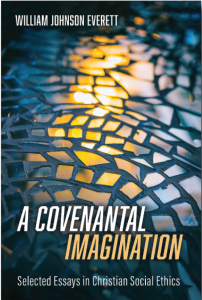
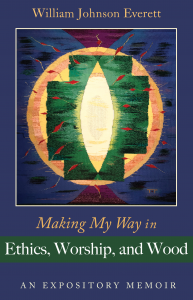

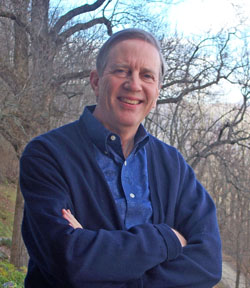
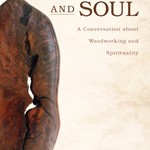
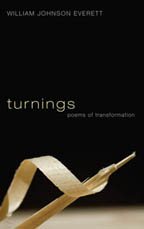
 Red Clay, Blood River
Red Clay, Blood River